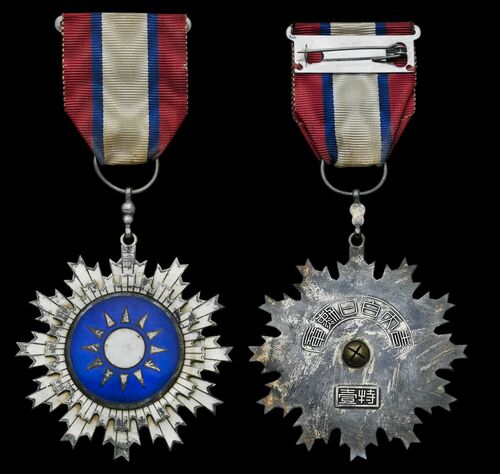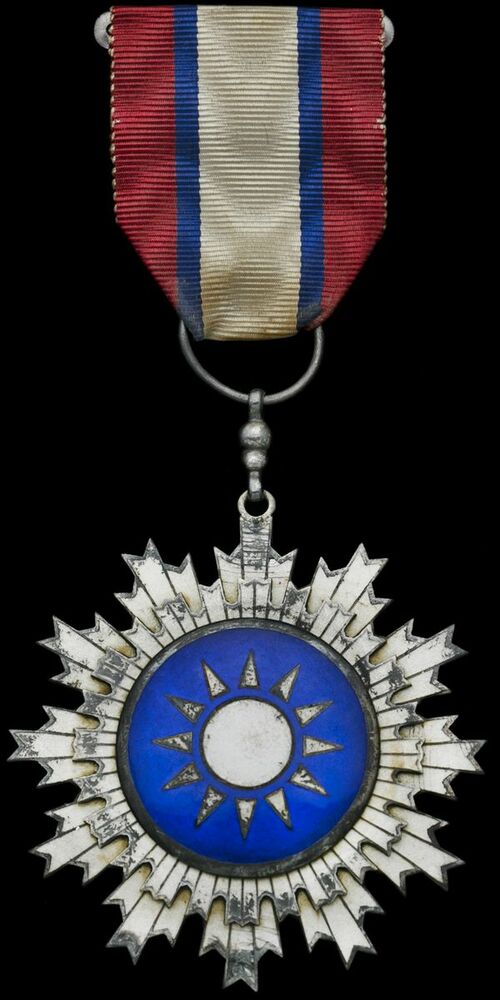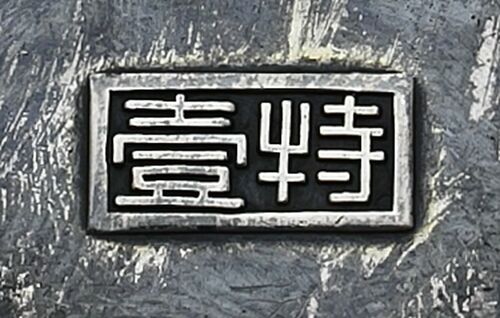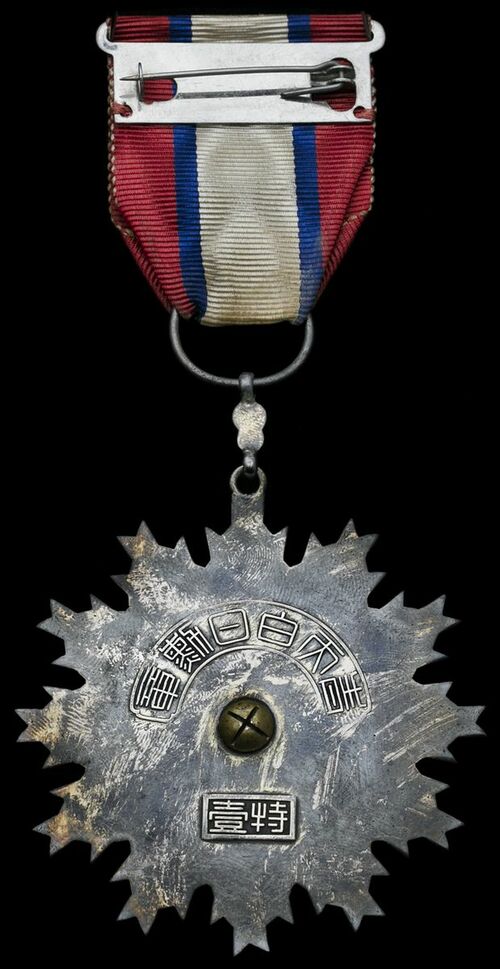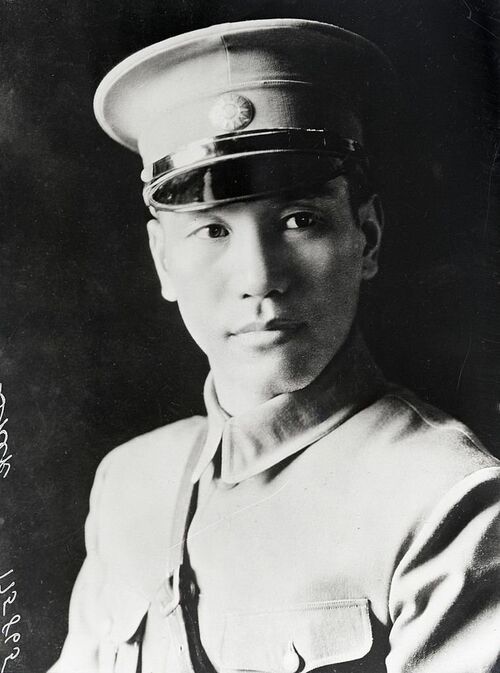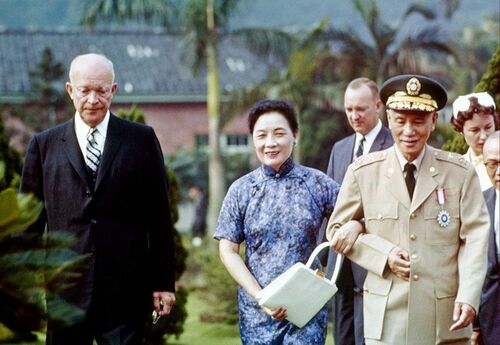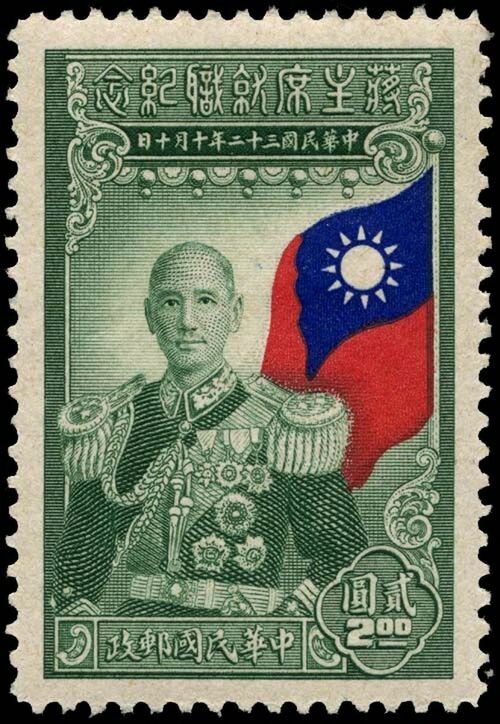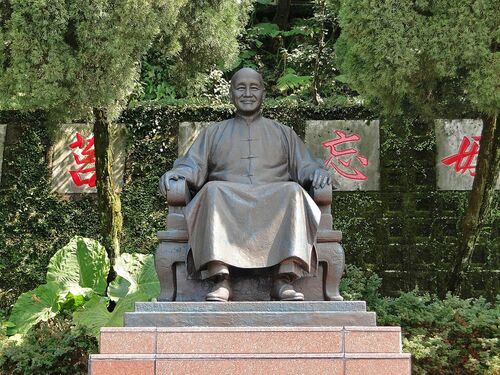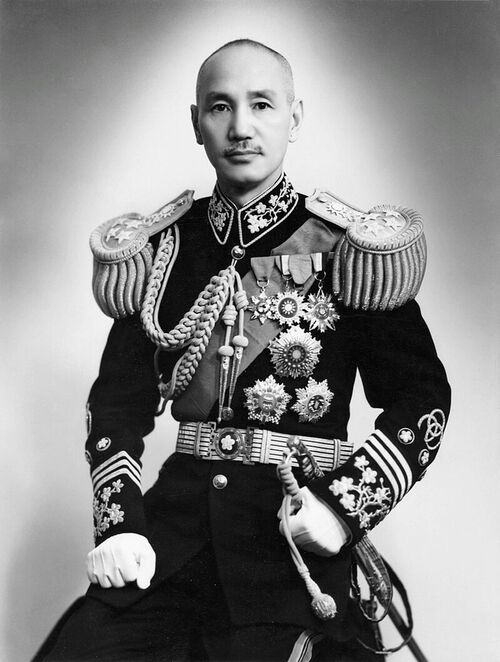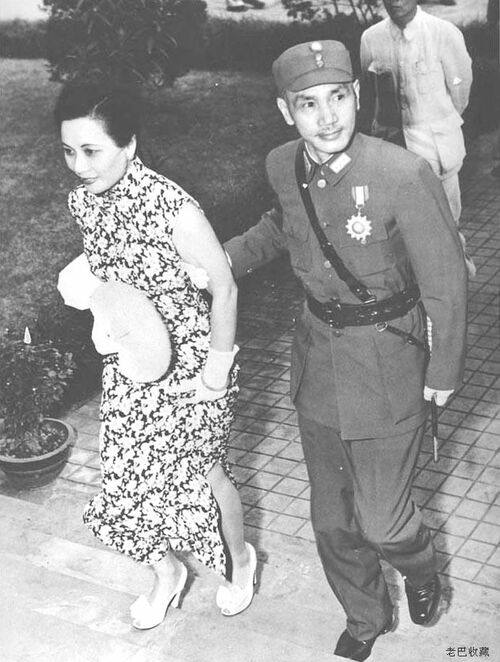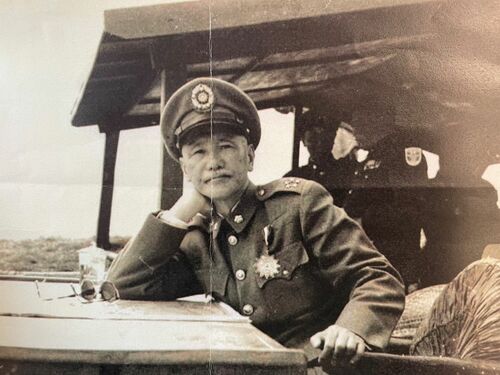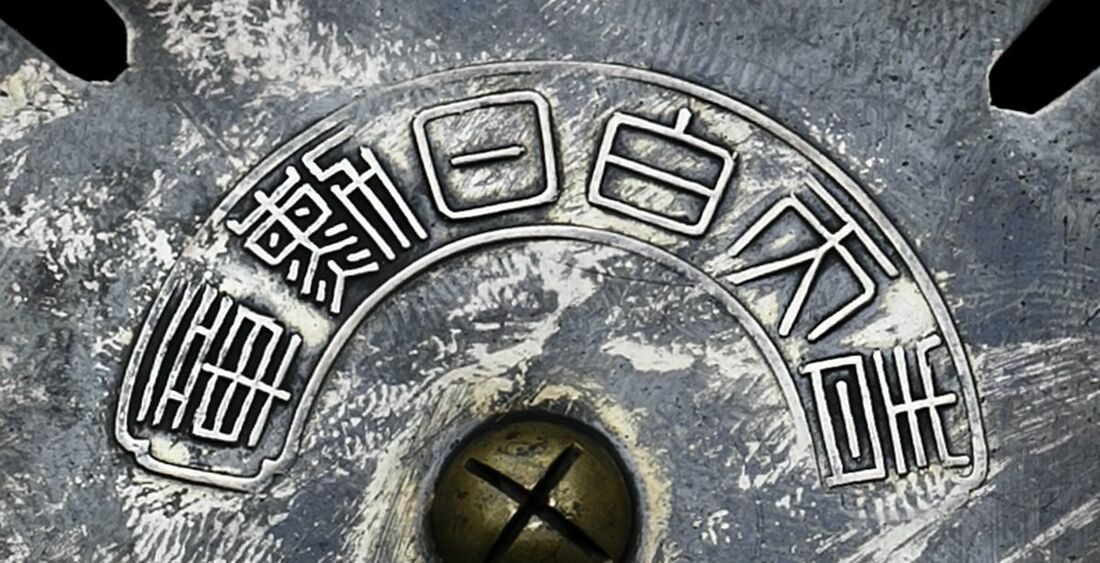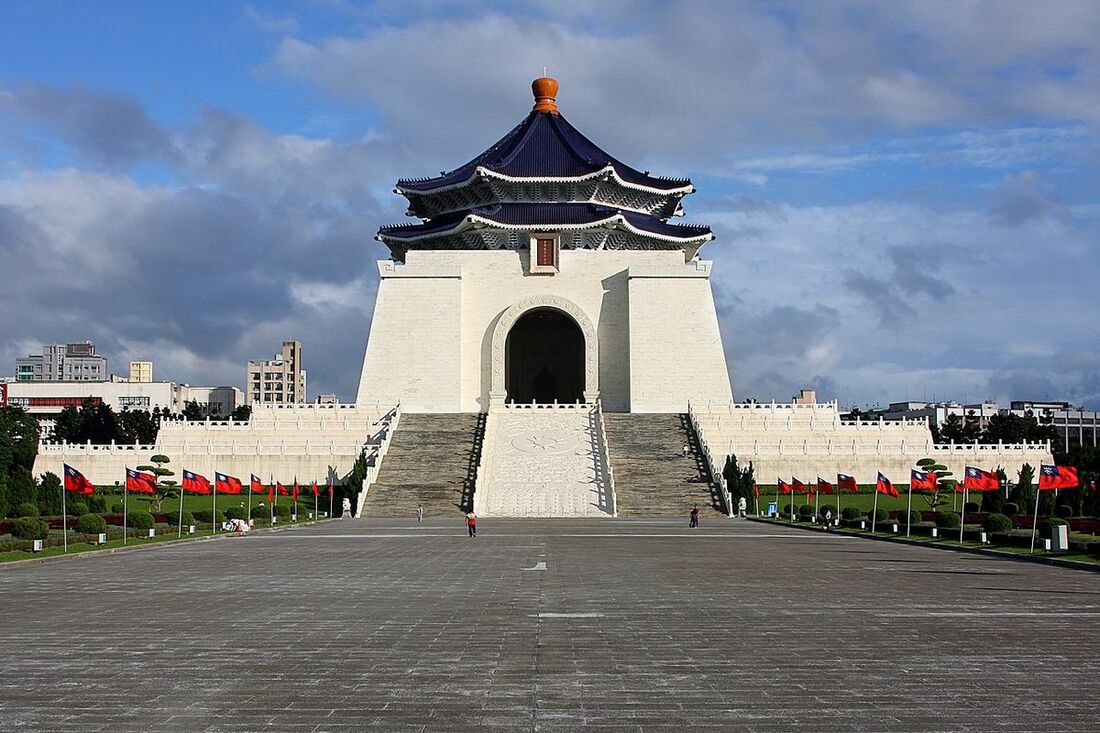Auction: 23003 - Orders, Decorations and Medals
Lot: 1
(x) The historically important Order of Blue Sky and White Sun attributed to Generalissimo Chiang Kai-Shek, leader of the Chinese National Revolutionary Army and 1st President of the Republic of China
China, Republic of China (Taiwan), Order of Blue Sky and White Sun, 2nd Type breast Badge, silver and enamel, with brass rivet to reverse, reverse with typical local characters stating 'Blue Sky and White Sun Medal' and additionally embossed 'The Special Chosen One' in local characters, obverse with symbolic design of the Republic of China and the Kuomintang, some chipping and wear commensurate with age, very fine, rare and of the highest historical importance
Provenance:
Exhibited Chiang Kai-Shek Memorial Hall, opened May 1980.
Returned to Kuomintang Archives.
Exhibited by the family at Yangmingshan National Park (Zhongxing Guesthouse), circa 1990.
Purchased from a direct descendant circa 2000.
Spink Hong Kong, July 2013 (HK$8,640,000).
XRF (X-ray fluorescence) testing undertaken on 5 October 2023 upon the Badge presents the following results:
Test 1
Silver (Ag) - 99.38%
Copper (Cu) - 0.19%
Gold (Au) - 0.43%
Test 2
Silver (Ag) - 99.82%
Copper (Cu) - 0.18%
The Order of Blue Sky and White Sun was founded in May 1929 and has been awarded on just 211 occasions to-date for '...outstanding contributions to National Security under foreign invasion.'; it was last awarded in January 2020.
Chiang Kai-Shek, whilst serving as Chairman of the National Government of China, was awarded the Order on 22 February 1930, which would have been the award of the 1st Type Medal. At that time, it was the highest Order that could be bestowed. The Order of National Glory, which is today the highest Order, was founded in November 1937 and has only been awarded five times, including to Chiang.
During the 1936 Xi'an Incident, his Medal was unsurprisingly lost (almost certainly destroyed) and thus this example, specially inscribed on the reverse, was presented to him. It was clearly a prized object for the Generalissimo, for it was repeatedly photographed being worn by him during his career. This Medal was retained by his family after his death and thus passed into private hands a little over two decades ago. When previously offered by Spink Hong Kong in 2012, the authenticity was questioned: after detailed investigations and authentication, it was eventually sold in July 2013.
The first claim made was that his Insignia of the Order of the Blue Sky and White Sun is housed in the Republic of China Armed Forces Museum Taipei, having been transferred from the President's Office after his death in 1975. The Museum does indeed hold an example of the Order, however it is the Grand Cordon with Sash Badge. This cannot possibly be attributed to the Generalissimo as the Order was only re-organised with the Sash Badge in 1980, under the Armed Forces Decoration Act.
The second claim came from the Ministry of National Defence - stating that three of his Orders (Order of Brilliant Jade, Order of National Glory and Order of Blue Sky and White Sun) were interred in his Mausoleum at his death. This claim can be discredited under by the Resolution passed in the Meeting of the Funeral Committee which gave approval for the National Mint to manufacture examples of those three Orders to be buried with him rather that the originals (In Memoriam; The world mourning President Chiang Kai-Shek, Kai-Shek Chiang, refers).
The Order has been inspected by experts in the field worldwide, who universally accept this Badge as of the correct style and manufacturing quality for the period of issue.
Chiang Kai-Shek was born Chiang Jui-Yüan in Fenghwa, Chekiang (Zhejiang), China on 31 October 1887. Also known as Chiang Chung-Ching with the genealogical records of his family as Chiang Chou-T'ai, he was a Chinese politician, revolutionary, and military leader who served as the leader of the Republic of China and served five terms as President until his passing in his official residence on 5 April 1975. He was also the Generalissimo of the National Revolutionary Army from 1928 until his death and was the last of the 'Big Four Allies' from the Second World War to pass away. Whilst historians have written hundreds of books into his life and times, a short biography is offered by Encyclopaedia Britannica:
'Chiang was born into a moderately prosperous merchant and farmer family in the coastal province of Zhejiang. He prepared for a military career first (1906) at the Baoding Military Academy in North China and subsequently (1907-11) in Japan. From 1909-11 he served in the Japanese Army, whose Spartan ideals he admired and adopted. More influential were the youthful compatriots he met in Tokyo; plotting to rid China of the Qing (Manchu) dynasty, they converted Chiang to republicanism and made him a revolutionary.
In 1911, upon hearing of revolutionary outbreaks in China, Chiang returned home and helped in the sporadic fighting that led to the overthrow of the Manchus. He then participated in the struggles of China’s republican and other revolutionaries in 1913-16 against China’s new President and would-be Emperor, Yuan Shikai.
After these excursions into public life, Chiang lapsed into obscurity. For two years (1916–17) he lived in Shanghai, where he apparently belonged to the Green Gang (Qing Bang), a secret society involved in financial manipulations. In 1918 he reentered public life by joining Sun Yat-sen, the leader of the Nationalist Party, or Kuomintang. Thus began the close association with Sun on which Chiang was to build his power. Sun’s chief concern was to reunify China, which the downfall of Yuan had left divided among warring military satraps. Having wrested power from the Qing, the revolutionists had lost it to indigenous warlords; unless they could defeat these warlords, they would have struggled for nothing.
Shortly after Sun Yat-sen had begun to reorganize the Nationalist Party along Soviet lines, Chiang visited the Soviet Union in 1923 to study Soviet institutions, especially the Red Army. Back in China after four months, he became commandant of a military academy, established on the Soviet model, at Whampoa, near Guangzhou. Soviet advisers poured into Guangzhou, and at this time the Chinese communists were admitted into the Nationalist Party. The Chinese communists quickly gained strength, especially after Sun’s death in 1925, and tensions developed between them and the more conservative elements among the Nationalists. Chiang, who, with the Whampoa army behind him, was the strongest of Sun’s heirs, met this threat with consummate shrewdness. By alternate shows of force and of leniency, he attempted to stem the communists’ growing influence without losing Soviet support. Moscow supported him until 1927, when, in a bloody coup of his own, he finally broke with the communists, expelling them from the Nationalist Party and suppressing the labour unions they had organized.
Meanwhile, Chiang had gone far toward reunifying the country. Commander in chief of the revolutionary army since 1925, he had launched a massive Nationalist campaign against the northern warlords in the following year. This drive ended only in 1928, when his forces entered Beijing, the capital. A new central government under the Nationalists, with Chiang at its head, was then established at Nanjing, farther south. In October 1930 Chiang became Christian, apparently at the instance of the powerful Westernized Soong family, whose youngest daughter, Mei-ling, had become his second wife. As head of the new Nationalist government, Chiang stood committed to a program of social reform, but most of it remained on paper, partly because his control of the country remained precarious. In the first place, the provincial warlords, whom he had neutralized rather than crushed, still disputed his authority. The communists posed another threat, having withdrawn to rural strongholds and formed their own army and government. In addition, Chiang faced certain war with Japan, which, after seizing Manchuria (Northeast Provinces) in 1931, showed designs upon China proper. Chiang decided not to resist the coming Japanese invasion until after he had crushed the communists—a decision that aroused many protests, especially since a complete victory over the communists continued to elude him. To give the nation more moral cohesion, Chiang revived the state cult of Confucius and in 1934 launched a campaign, the so-called New Life Movement, to inculcate Confucian morals.
In December 1936 Chiang was seized by one of his generals who believed that Chinese forces should concentrate on fighting the Japanese instead of the communists. Chiang was held captive for some two weeks, and the Sian (Xian) Incident, as it became known, ended after he agreed to form an alliance with the communists against the Japanese invaders. In 1937 the mounting conflict between the two countries erupted into the Sino-Japanese War. For more than four years China fought alone until it was joined by the Allies, who with the exception of the Soviet Union declared war on Japan in 1941. China’s reward was an honoured place among the victors as one of the Big Four. But internally Chiang’s government showed signs of decay, which multiplied as it resumed the struggle against the communists after the Japanese surrendered to the United States in 1945. Civil war recommenced in 1946; by 1949 Chiang had lost continental China to the communists, and the People’s Republic of China was established. Chiang moved to Taiwan with the remnants of his Nationalist Forces, established a relatively benign dictatorship over the island with other Nationalist leaders, and attempted to harass the communists across the Formosa Strait. The chastened Chiang reformed the ranks of the once-corrupt Nationalist Party, and with the help of generous American aid he succeeded in the next two decades in setting Taiwan on the road to modern economic development. In 1955 the United States signed an agreement with Chiang’s Nationalist government on Taiwan guaranteeing its defense. Beginning in 1972, however, the value of this agreement and the future of Chiang’s government were seriously called in question by the growing rapprochement between the United States and the People’s Republic of China. Chiang did not live to see the United States finally break diplomatic relations with Taiwan in 1979 in order to establish full relations with the People’s Republic of China. After his death in 1975 he was succeeded temporarily by Yen Chia-kan (C.K. Yen), who was in 1978 replaced by Chiang’s son Chiang Ching-kuo.'
Reference sources:
Order of Blue Sky and White Sun 1929-2022, Chuk Kang Ming.
China's Destiny, Chiang Kai-Shek.
Generalissimo: Chiang Kai-shek and the China He Lost, Jonathan Fenby.
The Generalissimo, Jay Taylor.
Victorious in Defeat, Alexander V. Pantsov.
Reference Catalogue Orders, Medals and Decorations of the World , Borna Barac.
Subject to 5% tax on Hammer Price in addition to 20% VAT on Buyer’s Premium.
Sold for
£300,000
Starting price
£300000

